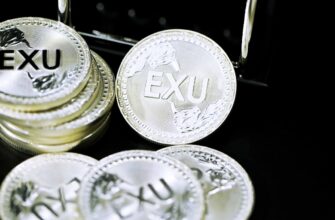Investors seeking diversified international stock exposure often consider Schwab International Index Fund (SWISX), a low-cost mutual fund tracking developed markets outside the U.S. and Canada. However, exchange-traded funds (ETFs) offer compelling advantages like intraday trading, lower expense ratios, and enhanced tax efficiency. This guide explores the best SWISX ETF equivalents to help you optimize your global portfolio.
## Why Consider an ETF Alternative to SWISX?
While SWISX boasts a low 0.06% expense ratio and solid MSCI EAFE Index tracking, ETFs provide unique benefits:
– **Trading Flexibility**: Buy/sell anytime during market hours vs. mutual funds’ end-of-day pricing
– **Lower Costs**: Many ETFs have expense ratios under 0.07%
– **Tax Efficiency**: ETFs generate fewer capital gains distributions due to in-kind creation/redemption
– **No Minimums**: Purchase single shares versus SWISX’s $1 minimum initial investment
## Top 5 SWISX ETF Equivalents
These ETFs closely mirror SWISX’s developed market focus with competitive fees:
1. **Schwab International Equity ETF (SCHF)**
Expense Ratio: 0.06%
Tracks: FTSE Developed ex-US Index
Why it stands out: Schwab’s own ETF alternative with identical pricing to SWISX and exposure to 1,400+ large/mid-cap stocks.
2. **iShares Core MSCI EAFE ETF (IEFA)**
Expense Ratio: 0.07%
Tracks: MSCI EAFE IMI Index
Key advantage: Broader coverage including small-caps across 21 developed markets.
3. **Vanguard FTSE Developed Markets ETF (VEA)**
Expense Ratio: 0.05%
Tracks: FTSE Developed All Cap ex-US Index
Notable feature: Lowest fees in category with 4,000+ holdings for maximum diversification.
4. **SPDR Portfolio Developed World ex-US ETF (SPDW)**
Expense Ratio: 0.04%
Tracks: S&P Developed Ex-U.S. BMI Index
Best for: Cost-conscious investors seeking ultra-low expenses.
5. **iShares MSCI EAFE ETF (EFA)**
Expense Ratio: 0.33%
Tracks: MSCI EAFE Index
Consider if: You prioritize identical index alignment despite higher fees.
## Key Differences: SWISX vs. ETFs
| Feature | SWISX (Mutual Fund) | ETF Equivalents |
|——————|———————|—————–|
| Trading | End-of-day pricing | Real-time trading |
| Minimum Investment | $1 initial | 1 share (~$30-$70) |
| Tax Efficiency | Moderate | High |
| Expense Ratios | 0.06% | 0.04%-0.33% |
| Settlement Time | T+1 | T+2 |
## How to Choose Your International ETF
Follow this decision framework:
1. **Match the index**: Prefer MSCI EAFE? Choose IEFA. Prefer FTSE? Opt for SCHF or VEA.
2. **Compare costs**: Prioritize funds below 0.10% expense ratios
3. **Check liquidity**: Ensure average daily volume exceeds 1M shares
4. **Verify holdings**: Confirm country allocations align with your strategy (Japan/UK/Europe focus)
5. **Consider tax implications**: ETFs typically outperform mutual funds in taxable accounts
## SWISX ETF Equivalent FAQ
**Q: Is SCHF the exact ETF version of SWISX?**
A: Nearly identical in cost and regional exposure, but SCHF tracks the FTSE index while SWISX follows MSCI EAFE. Holdings overlap is approximately 85%.
**Q: Why choose VEA over SWISX?**
A: VEA offers lower fees (0.05% vs 0.06%), includes small-caps, and has superior tax efficiency – ideal for taxable brokerage accounts.
**Q: Can I convert SWISX to an ETF without tax consequences?**
A: No. Selling SWISX to buy an ETF triggers capital gains taxes. Consult a tax advisor about in-kind transfers if held at Schwab.
**Q: Does SWISX include emerging markets?**
A: No. Like its ETF counterparts, SWISX focuses exclusively on developed markets. Pair with SCHE or VWO for emerging markets exposure.
**Q: Which ETF has the lowest expense ratio?**
A: SPDW currently leads with 0.04%, followed by VEA at 0.05%. Both undercut SWISX’s 0.06% fee.
## Final Considerations
While no ETF perfectly replicates SWISX, SCHF and IEFA deliver near-identical exposure with ETF advantages. For maximum cost savings, VEA and SPDW are compelling alternatives. Evaluate your brokerage platform (Schwab clients get SCHF commission-free), tax situation, and desired index methodology when selecting your SWISX equivalent. Always verify current holdings and performance metrics before investing.








